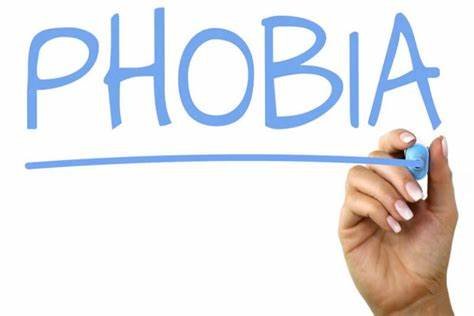The Danger of Being Black and Angry
In my early years as a social work student, I interned at a youth program for high-risk adolescents, joined by four other social work interns in similar early-year placements. While we shared our novelty in the field, I was the only Black male in the cohort, while the others identified as White. Internships, especially in social work, can be disillusioning; we fantasize about client engagement, but the reality often includes substantial administrative work. My peers and I bonded over our frustration, often lightened by humor. To help manage these emotions, we met weekly with our field supervisor to process our experiences and share our feelings openly.
Experiencing Anger in a Social Work Setting
During these sessions, I often felt detached when my peers displayed their anger more viscerally—raising their voices, clenching fists, or even hitting objects. I was repeatedly commended for my composure, which my peers perceived as self-mastery. The truth was that I never felt safe expressing my anger as they did. Despite our closeness, I sensed that, as a Black man, my anger would be perceived differently, even if I couldn’t articulate a specific consequence. This lingering fear raises the question: Where did it come from?
The “Angry Black Man” Stereotype and Its Impact
The schema I hold around the dangers of being perceived as an “angry Black man” is not one I developed independently. From an early age, I received explicit and implicit messages that an angry Black man is perceived as a threat. I was conditioned to suppress my emotions to avoid “warranted” consequences, including violence or even death. This fear is not unfounded; cases such as Ahmaud Arbery and George Floyd underscore the dangers Black men face when their anger or assertiveness is misinterpreted as threatening.
Understanding Anger and the Human Nervous System
Anger has a generally negative reputation because it can lead to behavior that deviates from our principles. For example, while I value calm communication, anger can drive me to raise my voice, deviating from the outcomes I aim for in my interactions. Societal principles are designed to optimize positive interactions and avoid harm, and when people show anger, we often respond with caution. This hypervigilance stems from the association of anger with potential harm, which, though essential, can lead to problematic stereotypes. Moreover, regulating anger is challenging because it involves involuntary physiological changes that occur in our subcortical regions. Just as we’re rarely aware of our heartbeat, it’s hard to consciously control the body’s physical responses to anger.
Empirical Support: The Science Behind Anger and Emotion Regulation
The science behind these processes is well-documented. The autonomic nervous system, which manages involuntary behaviors like heart rate, blood pressure, and respiration, becomes activated in response to stress-related emotions like anger. This activation is centered in the sympathetic nervous system, which governs our “fight or flight” responses, including non-verbal behaviors that communicate our emotions to others. According to Dr. Stephen Porges’ Polyvagal Theory, 90% of communication is non-verbal; when someone is visibly angry, we can assess not only their emotion but its intensity. This nuanced understanding enables us to respond appropriately and empathically.
Race, Perception, and Threat: Why Anger Feels Riskier for Black Men
Given the universality of this system, why does expressing anger feel riskier for Black men? Research shows that people, including police officers, are more likely to misidentify Black individuals as threatening. Studies indicate that, over a lifetime, 1 in 1,000 Black men is likely to be killed by a police officer, compared to 1 in 2,000 for all men and 1 in 33,000 for women. Black men comprise only around 6-7% of the U.S. population, yet face disproportionate policing risk. If those trained in threat assessment show bias, consider the layperson with no such training. The compounded perception of anger and racial bias creates a heightened risk for Black men that others do not face to the same extent.
Moving Forward: Embracing a Nuanced View of Mental Health
As we move toward a broader acknowledgment of mental health, it is increasingly understood that individuals have a wide range of emotions that need to be expressed. Anger is not to be feared; it is to be understood.
Sources:
- Edwards, F., Lee, H., & Esposito, M. (2019). Risk of being killed by police use of force in the United States by age, race–ethnicity, and sex. Proceedings of the National Academy of Sciences, 116(34), 16793-16798.
- Porges, S. W. (2001). The polyvagal theory: Phylogenetic substrates of a social nervous system. International Journal of Psychophysiology, 42(2), 123-146.
- Dovidio, J. F., & Gaertner, S. L. (2000). Aversive racism and selection decisions: 1989 and 1999. Psychological Science, 11(4), 315-319.
Joel Kouame, LCSW, MBA, CAMS-II, is a seasoned mental health specialist, adjunct professor, and owner of JK Counseling, a New York-based virtual practice dedicated to supporting teens, couples, and individuals. Joel brings a depth of expertise in stress-related challenges, including anger, trauma, and anxiety, using interventions like EMDR, IFS, the Gottman Method, and narrative therapy. JK Counseling, offers a trauma-informed, evidence-based approach to help clients build resilience, manage stress, and enhance emotional well-being. For more information, visit jkcounseling.com or connect on Facebook, LinkedIn (https://www.linkedin.com/company/jk-counseling/), and Instagram (https://www.instagram.com/jkcounseling)
Practice Owner/Psychotherapist
D: 917-451-5344
M: 917-935-4347
- Joel Kouamehttp://jkcounseling.com







